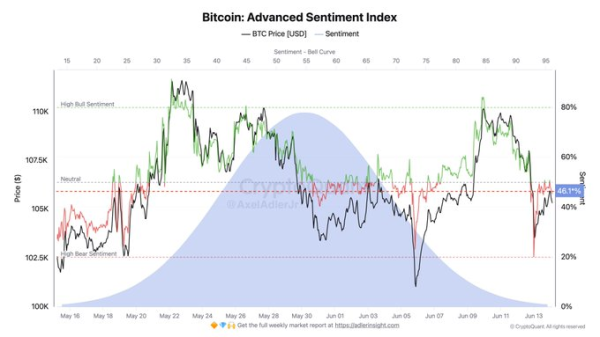Synopsis
As global jurisdictions advance clear crypto regulations, India risks falling behind despite its digital prowess. With the G20 Declaration anniversary and FSB review approaching, experts urge a structured national dialogue and a principles-based discussion paper to retain talent, capital, and leadership in the evolving digital asset economy.
The year 2025 has emerged as a pivotal juncture for the crypto-asset industry within the evolving landscape of global digital innovation. Jurisdictions spanning from Washington D.C. to Brussels, and from Singapore to Dubai, are progressing beyond exploratory phases to the formal integration of digital assets into their established financial systems.
As our country takes the next leap forward in economic and technological advancement, it is imperative that we actively engage and articulate our position on this transformative phenomenon.
Over the preceding year, the international discourse surrounding crypto-asset regulation has transitioned from a question of implementation to a focus on modalities. The United States, previously noted for its regulatory ambiguity, is now undertaking substantive measures to supplant its enforcement-centric approach with a framework predicated on clearly defined rules.
Crypto Tracker![]() TOP COIN SETSBTC 50 :: ETH 501.52% BuyDeFi Tracker0.95% BuySmart Contract Tracker-0.97% BuyWeb3 Tracker-4.09% BuyNFT & Metaverse Tracker-8.97% BuyTOP COINS (₹) Ethereum222,343 (2.26%)BuyBitcoin9,223,097 (2.22%)BuyBNB56,551 (1.72%)BuyXRP204 (0.74%)BuyTether86 (0.11%)BuyRecent legislative initiatives are addressing inter-agency jurisdictional complexities and
TOP COIN SETSBTC 50 :: ETH 501.52% BuyDeFi Tracker0.95% BuySmart Contract Tracker-0.97% BuyWeb3 Tracker-4.09% BuyNFT & Metaverse Tracker-8.97% BuyTOP COINS (₹) Ethereum222,343 (2.26%)BuyBitcoin9,223,097 (2.22%)BuyBNB56,551 (1.72%)BuyXRP204 (0.74%)BuyTether86 (0.11%)BuyRecent legislative initiatives are addressing inter-agency jurisdictional complexities and
Did you Know?
The world of cryptocurrencies is very dynamic. Prices can go up or down in a matter of seconds. Thus, having reliable answers to such questions is crucial for investors.
View Details »establishing explicit parameters for stablecoins and investment products derived from crypto-assets. These reforms are not merely legal adjustments; they are strategic enablers for the mobilization of mainstream capital, the attraction of technological innovation, and the cultivation of public trust in this nascent asset class.
Live Events
The European Union’s recent implementation of the Markets in Crypto-Assets (MiCA) framework has elevated global regulatory benchmarks.
This represents the first instance of a pan-jurisdictional, harmonized regulatory regime governing crypto-assets. MiCA provides clarity for businesses operating within the digital asset space, enhances consumer protection, and adds strategic depth to the EU’s broader digital finance agenda.
Within the Asian financial sphere, key hubs are articulating definitive regulatory intentions. The Hong Kong Special Administrative Region is actively cultivating an environment conducive to becoming a regional center for crypto-assets, while Singapore has finalized its regulatory framework for stablecoins and operates a stringent licensing regime for digital asset service providers.
Both jurisdictions are adeptly navigating the delicate equilibrium between fostering innovation and ensuring robust investor protection.
Japan, an early adopter in this domain, continues to refine its Virtual Asset Service Provider (VASP) licensing framework and mandates the segregation of client funds, thereby ensuring robust safeguards for consumers.
South Korea is in the process of formulating comprehensive legislation aimed at consolidating crypto-asset oversight and establishing clear standards pertaining to disclosure, reserve requirements, and cybersecurity protocols.
In the Middle East, the United Arab Emirates is strategically positioning itself as a prominent destination for global financial technology firms through regulatory frameworks spearheaded by Dubai’s Virtual Asset Regulatory Authority (VARA) and Abu Dhabi’s Financial Services Regulatory Authority (FSRA). These authorities have instituted licensing regimes, regulations governing virtual asset exchanges, and regulatory sandboxes designed to foster innovation while maintaining rigorous compliance standards.
In this global context, India’s current stance warrants critical evaluation. While commendable progress has been made in areas such as taxation and the monitoring of financial intelligence related to digital assets, the absence of a publicly available, principles-based discussion paper on the regulation of crypto-assets remains a notable gap.
Our country has demonstrated grounds for global leadership in the development of digital public infrastructure, exemplified by initiatives such as UPI, Aadhaar, and ONDC. Consequently, the perceived lag in proactively shaping the future of digital assets is incongruous with this established trajectory.
Our Fintech innovators possess world-class capabilities, the consumer base exhibits a strong affinity for digital solutions, and our developers are integral to the global crypto-asset infrastructure. However, the lack of a clear domestic regulatory framework risks the migration of both capital and talent to more accommodating jurisdictions and greener pastures.
A structured national dialogue, predicated on reasoned deliberation rather than reactive measures or inconsistent signals, is essential now more than ever. The publication of a comprehensive discussion paper would serve as an optimal initial step in catalyzing this crucial process. Furthermore, India is scheduled for a Financial Stability Board (FSB) peer review in October 2025, which will assess our nation’s preparedness and alignment with international standards in the regulation of crypto-assets.
Demonstrating clear regulatory intent prior to this review is of paramount importance. Additionally, September 2025 will mark the second anniversary of the G20 Delhi Declaration, which underscored the critical need for global cooperation in the regulation of the crypto-asset ecosystem.
Our country can no longer afford to defer decisive action in this domain. The global landscape is rapidly evolving, and it is imperative that we align our trajectory accordingly.
(The author G M Harish is a Member of Parliament)
(Disclaimer: Recommendations, suggestions, views, and opinions given by experts are their own. These do not represent the views of the Economic Times)


